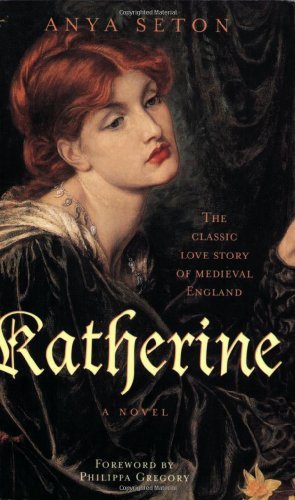What do you think?
Rate this book


500 pages, Paperback
First published January 1, 1954
I've come for you, Katrine


Women desire six things: They want their husbands to be brave, wise, rich, generous, obedient to wife, and lively in bed.
- Geoffrey Chaucer (not a quote from Katherine)
Perhaps there might not be included in his epitaph the one tribute to his knighthood that he knew he deserved: 'Il fut toujours bon et loyal chevalier.' (loosely translated: he was always a good and loyal knight)
But whatever the shadowed years might bring, as long as life should last, he knew that he had here at his side one sure recompense and one abiding loyalty.



The duchess was today dazzling as the southern May, having dressed to please her husband's taste, in full magnificence of jewels and ermine. Her silver-gilt hair was twined with pearls and she wore her gold and diamond coronet. She smelled of jasmine and Katherine adored her.
 has a small font and little space between the lines. At first I could only manage 20 pages at a time. I guess kindle has left me spoilt. However, I soon adjusted and this morning I was so eager to find out Katherine's fate that I was up before 6am, feverishly reading.
has a small font and little space between the lines. At first I could only manage 20 pages at a time. I guess kindle has left me spoilt. However, I soon adjusted and this morning I was so eager to find out Katherine's fate that I was up before 6am, feverishly reading.